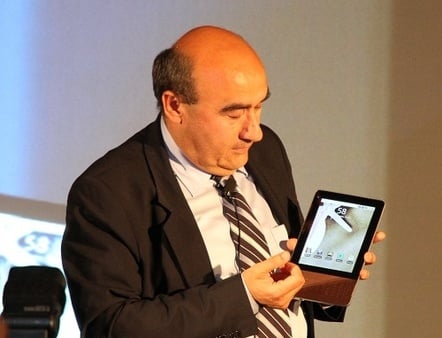This article is more than 1 year old
Heads to roll at Lenovo amid 'severe downturn' in PC sales
World's largest PC maker aims for $150m in cost controls, says never been a worse time to sell smart devices
Lenovo is entering cost cutting mode following the second straight quarterly decline in sales, and plunging profits for the first time since 2020, as the industry faces weakening demand for personal computers.
At a group level, revenue for Q3 of Lenovo's fiscal 2023 [PDF] ended 3 December was $15.26 billion, down 24 percent year-on-year, and net profit was down a whopping 32 percent to $437 million.
The "operating performance was impacted by subdued demand in the PC sector, stemming from persistent macro headwinds including rising interest rates," the company said today.
The Intelligent Devices Group (IDG) – PCs, smart devices and the mobile biz – reported turnover of $11.585 billion, down from $17.609 billion. That's a 34.2 percent drop. Operating profit for the division – the only one available – showed a 35 percent fall to $878 million.
"The smart devices market is in its worst period," CEO Yang Yuanqing said on a webcast, adding that the PC and mobile businesses were suffering from a "severe downturn."
Lockdown liftoff leads to tech dip
PCs became the interface that allowed people to work, to play, to communicate and to learn during pandemic-induced lockdowns. The industry couldn't make enough products to sate demand and shipments reached 350 million units in 2021. Sales started to fall last year and finished 2022 on 286.2 million, still way above pre-pandemic levels.
Now companies including Lenovo HP and Dell are facing an uphill battle to sell more product.
- Dell planning job cuts as PC demand jumps off a cliff
- As Apple sales slide, Tim Cook says fanbois will tolerate higher iPhone prices
- Sweating the assets: Techies hold onto PCs, phones for longer than ever
- Intel cuts some workers' pay to fund its future
With a huge reliance on IDG, Lenovo said its medium-term financial priority is all about trying to improve profit, and so it's looking to reduce overheads. On the same conference call today, chief finance bod Wong Wai Ming said the company needs to remove $150 million in costs, which would double the net margin.
"This includes overall reduction in operational spending as well as workforce adjustments where necessary and appropriate," he said. Lenovo has not indicated how many roles will be at risk. It employs 75,000 people.
Lenovo said it reduced advertising and promotional expenses by $92 million in Q3.
Gartner has already written off any prospects for growth in the devices market in 2023. Last month it forecast a year-on-year 4.4 percent decline in PCs, tablets and smartphones for 1.74 billion units. It expects things to improve after that, with refresh cycles coming on stronger.
Lenovo has worked hard to diversify its business, buying up IBM's x86 server business and packaging managed services that can be resold by a legion of resellers that promote the company's wares.
The Infrastructure Solutions Group – servers, etc – grew to $2.85 billion from $1.928 billion, and the Solutions and Services Group climbed to $1.836 billion from $1.497 billion. ®

